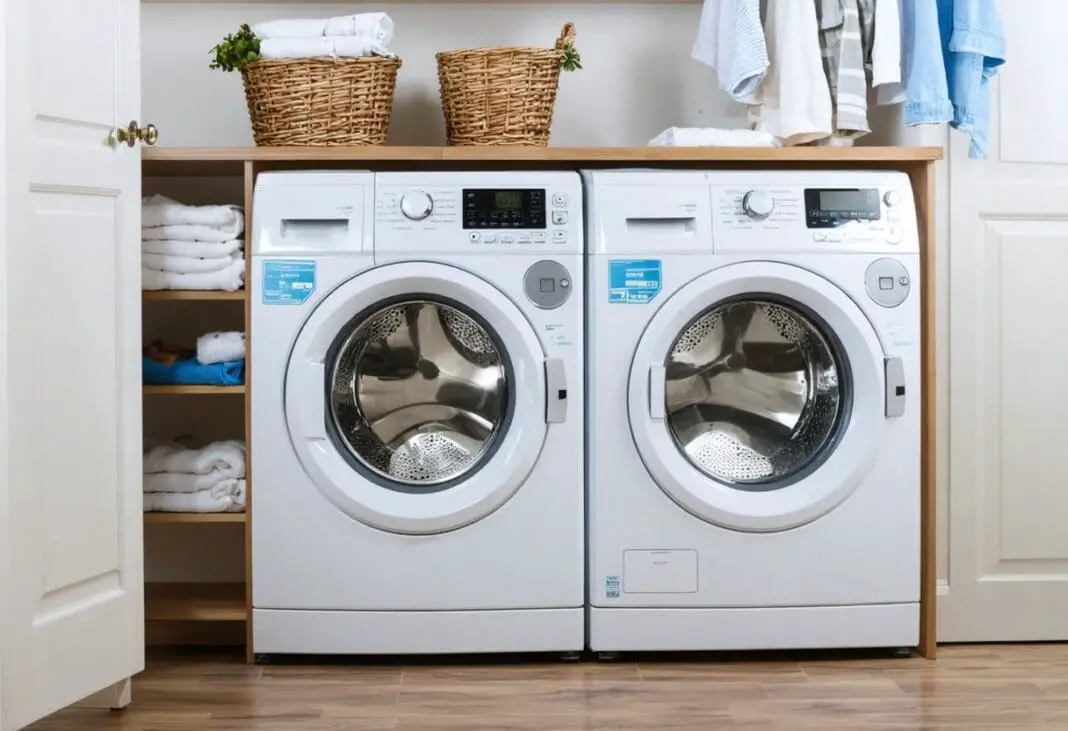That rhythmic humming from the laundry room might sound peaceful, but your washer and dryer could be crying for help. Most people think tossing clothes in with some detergent is foolproof, but several common habits can cut your appliances’ lifespan in half. These machines work hard every day, yet many homeowners unknowingly sabotage them with simple mistakes that seem harmless.
Forgetting to empty pockets before washing
That loose change jangling around during the wash cycle isn’t just annoying – it’s causing serious damage. Coins, keys, screws, and other metal objects can scratch the inner drum and damage the outer tub of washing machines. Even worse, these items can break impeller blades or get lodged in the drain pump, leading to expensive repairs that could have been easily prevented.
Non-metal items cause problems too. Tissues disintegrate and can clog drain systems, while items like gum, crayons, or lip balm melt in the dryer and create sticky messes on the drum. Pens can explode and stain not just clothes but the interior of machines. Paper money left in pockets becomes pulp that can block drainage systems. Taking thirty seconds to check all pockets before each load prevents these headaches and protects your investment.
Using too much detergent and fabric softener
More soap doesn’t mean cleaner clothes – it means more problems for your washer. Excess detergent creates too many suds, which can cause machines to overflow and damage internal components. High-efficiency washers are especially sensitive and require even less detergent than people typically use. The extra soap doesn’t rinse out properly, leaving residue that builds up over time.
This buildup deteriorates seals and gaskets while creating the perfect environment for mold and mildew growth. The trapped dirt and body oils become food for these organisms, leading to musty odors and potential health concerns. Clothes end up feeling sticky and less clean because the excess soap actually redeposits soil back onto fabrics. Following manufacturer guidelines for detergent amounts keeps machines running smoothly and clothes truly clean.
Overloading both machines with too many items
Cramming every towel into one load seems efficient, but overloaded machines work much harder than designed. Washers can’t properly agitate oversized loads, preventing detergent from circulating and clothes from getting thoroughly clean or rinsed. The motor, belts, and bearings experience excessive strain trying to move the heavy, unbalanced load. This unnecessary stress shortens the machine’s lifespan significantly.
Overloaded dryers face similar problems with reduced airflow and overheating risks. Clothes packed too tightly can’t tumble properly, leading to uneven drying and longer cycle times. The heating elements work overtime trying to dry the oversized load, potentially causing the motor to overheat. Fire risks increase when heat sensors can’t properly detect moisture levels in packed machines. Medium-sized loads dry more efficiently and put less stress on components.
Never cleaning the machines themselves
Washing machines need washing too, but most people never think about cleaning them. Detergent residue, fabric softener, and dirt build up inside the drum and on internal components over time. This buildup prevents clothes from getting properly clean and creates ideal conditions for mold and mildew growth. The warm, moist environment inside washers becomes a breeding ground for bacteria and unpleasant odors.
Monthly cleaning prevents these issues and extends machine life. Many newer washers have self-cleaning cycles, but older models need manual cleaning with hot water and machine cleaner or white vinegar. Wiping down the drum, door seals, and dispensers removes visible buildup. Homes in hot, humid climates or those washing heavily soiled items should clean washers twice monthly to prevent problems.
Ignoring the dryer lint trap completely
Skipping lint trap cleaning after every load creates serious safety hazards. Even thin layers of lint force dryers to work harder, putting extra stress on motors and heating elements. Restricted airflow makes drying times longer and less efficient, wasting energy and money. The accumulated lint becomes a fire hazard as it’s highly combustible material sitting near heating elements.
Lint trap maintenance goes beyond just removing visible fuzz. Dryer sheets leave waxy residue that builds up on the mesh screen, blocking airflow even when the trap looks clean. Monthly deep cleaning with hot water and a scrub brush removes this invisible buildup. Properly maintained lint traps allow air to flow freely, preventing overheating and potential fires while helping clothes dry faster and more efficiently.
Leaving wet clothes sitting in the washer
Damp clothes left in the washer create the perfect storm for mold and mildew growth. The warm, wet, dark environment inside the drum becomes a breeding ground for these organisms within hours. Once established, mold spreads throughout the machine and becomes nearly impossible to eliminate completely. The musty odors transfer to every subsequent load, making clothes smell worse after washing than before.
Mold damage often requires expensive repairs or complete machine replacement since it affects internal components and seals. Front-loading washers are especially susceptible because their door seals trap moisture. Removing clothes immediately after wash cycles finish prevents this problem entirely. Leaving the washer door or lid open between loads allows air circulation to dry remaining moisture, further preventing mold growth and extending machine life.
Drying items that shouldn’t go in dryers
Not everything that gets washed belongs in the dryer, but many people automatically transfer entire loads without thinking. Rubber-backed bath mats can melt, break down, or even catch fire when exposed to high heat. Delicate lingerie with underwires and hooks can damage drum surfaces and catch on other items. Anything with flammable stains like cooking oils poses serious fire risks when combined with heat and friction.
Toys, purses, and wigs can disintegrate, melt, or clog drains and vents. Sandy beach clothes should be shaken out and air-dried first since sand can cause internal damage to sensitive components. Always check care labels and when in doubt, air dry items instead. Taking time to separate appropriate items before starting the dryer prevents damage to both clothes and the machine while avoiding potential safety hazards.
Installing machines without proper leveling
Unleveled washers and dryers create vibration problems that damage internal components over time. When machines aren’t perfectly level, they “dance” during operation, especially during spin cycles. This movement stresses bearings, belts, and other mechanical parts while potentially damaging floors, walls, and nearby objects. The constant vibration also makes machines much noisier than they should be.
Proper leveling requires adjusting individual feet until machines sit perfectly stable on all corners. A simple bubble level helps ensure accuracy, especially important in basements and older homes with uneven floors. Shipping bolts must be removed from new washers before first use, as they’re only meant to secure internal components during transport. Balanced machines last longer, operate more quietly, and provide better washing and drying performance.
Blocking airflow around the machines
Washers and dryers generate significant heat during operation and need adequate ventilation to prevent overheating. Machines crammed into tight closets or spaces without proper airflow work harder and wear out faster. Motors can overheat when heat has nowhere to dissipate, leading to premature failure and potential fire hazards. Even a few inches of clearance on all sides makes a substantial difference.
Dryer vents require special attention since they expel hot, moist air outside. Blocked or restricted vents force machines to work harder while creating fire risks from lint buildup. The vent system should be cleaned annually to remove accumulated lint and debris. Never run both appliances off the same outlet unless specifically designed for that electrical load, and avoid using extension cords or power strips with these high-powered appliances.
Simple changes in laundry habits can add years to washer and dryer lifespans while preventing costly repairs and safety hazards. These hardworking appliances deserve better than neglect and abuse from well-meaning owners who simply don’t know better.

